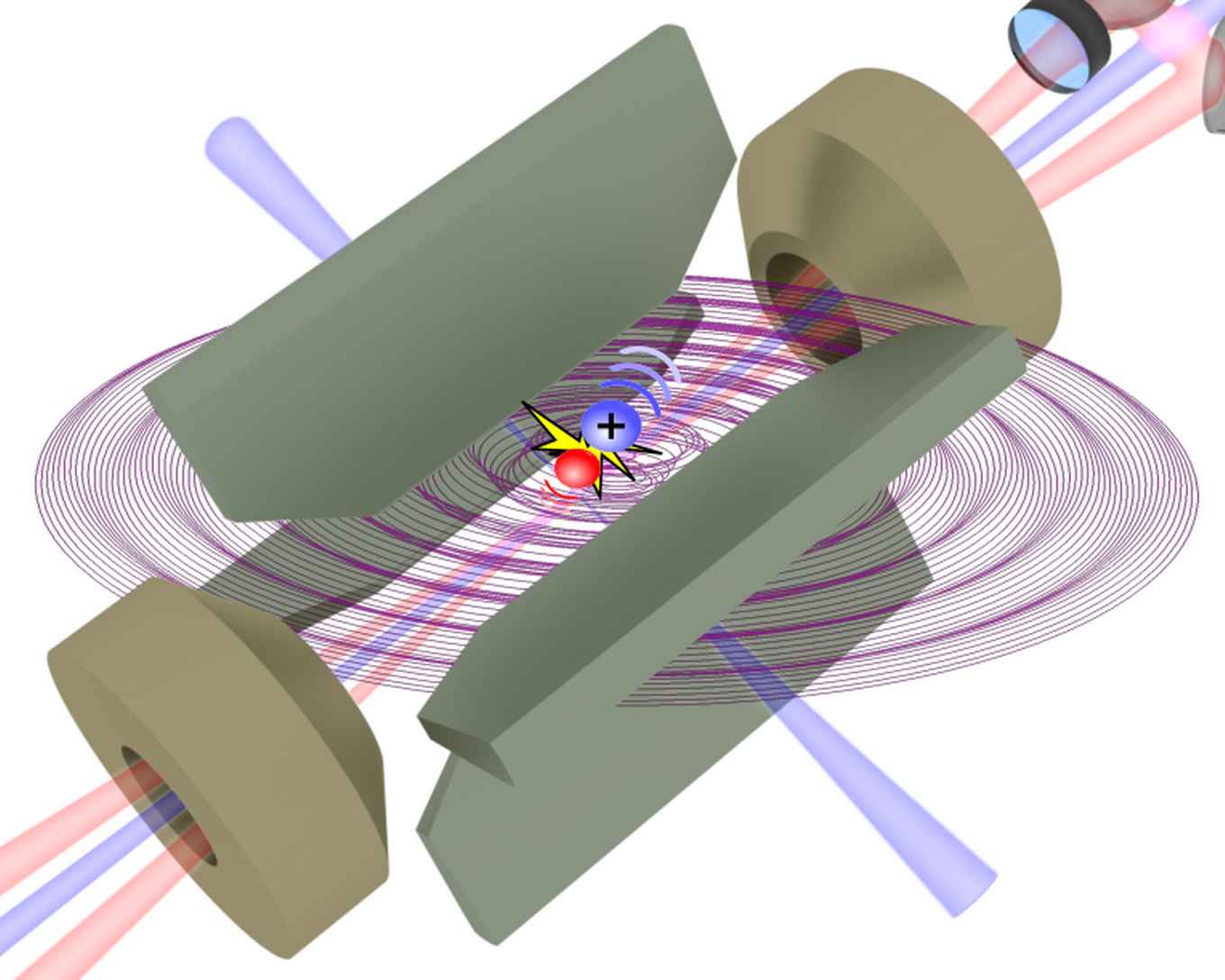IoP physicists cool an atom-ion mixture to the quantum regime
3 February 2020

Ultracold gases of neutral atoms are routinely prepared at temperatures reaching below 100 nanokelvin – that is, less than a ten millionth of a degree above absolute zero temperature – in many laboratories around the world. When it comes to ions, atoms that are charged because they “miss” an electron, the technique of laser cooling can be used to cool them to their lowest energy state of motion. These advances have put both atomic and ionic systems at the frontier of quantum technologies aimed at developing quantum computers and ultra-precise atomic clocks.
Quantum regime
Ideas of merging ions and atoms into a single quantum system also date back a very long time. However, despite intense efforts over the last decade, creating a quantum mixture of atoms and ions has remained an elusive goal – that is: until now. In a publication that appeared in Nature Physics this week [1], IoP physicist Thomas Feldker and his co-workers in the group of Rene Gerritsma have reported the observation of an atom-ion mixture at a temperature that is so low that it can no longer be understood with classical physics.
In the experiment, the researchers immersed a single trapped ion into a cloud of about ten thousand atoms at a temperature of a few microkelvin. They monitor the ion’s kinetic energy as it is cooled by the atomic bath using tools developed for the trapped ion quantum computer. One may expect that the ion simply gets the same temperature as the atoms after a few collisions. However, the oscillating electric fields needed for keeping the ion in place complicate matters. Due to these electric fields heating can occur when the ion collides with an atom. It is this effect that prevented the creation of an atom-ion quantum mixture up until now.
Smoking gun
A few years ago, it was calculated by a group at MIT [2] that these adverse heating effects could be mitigated by mixing a heavy ion with a light type of atoms. In the experiment in Amsterdam, the authors immerse a single ytterbium ion (171Yb+) into a cloud of lithium atoms (6Li). This combination has the largest mass ratio of all atom and ion species that allow straightforward laser manipulation. The authors measured the kinetic energy of the atoms and the ion in all directions of motion and concluded that the collision energy between the atoms and ion reaches the so-called s-wave limit. In this regime, quantum theory is needed for describing the collision. As a ‘smoking gun’ the authors present measurements of the collisions between the atoms and the ion, in which the atom and ion exchange their ‘spin state’, a quantum measure related to rotation. These collisions are shown to violate the classical results coming from a description known as Langevin theory, pointing to quantum phenomena in the collisions. By fitting their data using theory developed in the group of Dr. Tomza in Warsaw, the authors extract the scattering lengths – parameters that quantify the quantum scattering.
The results open up numerous new opportunities, such as the exploration of short-lived atom–ion configurations known as magneto-molecular resonances. These configurations, also called Feshbach resonances, form the working horse of quantum simulators that consist of atoms only, but have never been observed between atoms and ions since the required temperatures had not been reached before. The quantum atom-ion mixture that was now made could serve as a novel platform for quantum simulation of many body phenomena such as the physics of charged impurities interacting with a quantum fluid. Another striking possibility could be to use a cold cloud of atoms to continuously cool a trapped ion quantum computer.
References
Buffer gas cooling of a trapped ion to the quantum regime, T. Feldker, H. Fürst, H. Hirzler, N. V. Ewald, M. Mazzanti, D. Wiater, M. Tomza and R. Gerritsma, Nature Physics (2020).
[2] Micromotion-Induced Limit to Atom-Ion Sympathetic Cooling in Paul Traps, Marko Cetina, Andrew T. Grier, and Vladan Vuletić, Phys. Rev. Lett. 109, 253201 (2012).